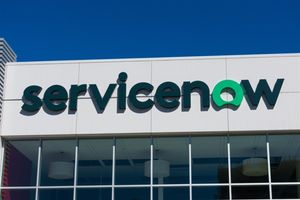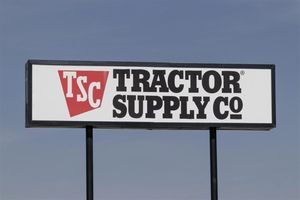Installing a fountain for pond systems can dramatically transform backyard water features while addressing practical water quality concerns. The right combination of fountain design and fountain pump technology creates both visual appeal and functional benefits that extend far beyond simple aesthetics.
Fountain Options for Different Pond Setups
Floating fountains represent the most straightforward approach for existing pond installations. These units sit directly on the water surface and require no structural modifications to your pond. Water depth becomes the primary consideration—most floating systems need at least 18 inches to operate effectively, though deeper water produces better results. Many fountains require 36” of depth or more.
Submersible installations create more natural-looking displays since all mechanical components remain hidden underwater. The fountain appears to emerge organically from the pond itself. This approach works particularly well in formal garden settings where visible equipment might detract from the overall design. Access for maintenance becomes more challenging with submersible systems.
External pump configurations place the motor outside the pond while drawing water through submerged intake lines. This setup often produces the most dramatic spray patterns since external pumps typically generate higher pressure. Maintenance becomes significantly easier when the pump remains accessible on dry ground. Note: external pump configurations are more expensive to purchase and need consistent water level in the pond.
Pump Performance and Sizing Fundamentals
Fountain pump capacity directly correlates with pond size and desired spray characteristics. Small residential ponds under 500 gallons typically require pumps rated between 100-500 gallons per hour. Medium-sized installations benefit from 500-1,500 GPH units, while large ponds often need pumps exceeding 1,500 GPH capacity.
Head height specifications determine maximum spray elevation. This measurement represents the vertical distance water can travel from the pump to the fountain nozzle. Higher displays require pumps with greater head height ratings, though actual flow rates decrease as spray height increases.
Power requirements vary considerably between residential and commercial applications. Standard household installations usually operate on 115-volt systems, while larger commercial setups may demand 230-volt or three-phase power connections. Energy-efficient motors have become increasingly important as operating costs accumulate over time.
Matching Fountain Systems to Pond Characteristics
Pond dimensions influence fountain selection more than aesthetic preferences. Surface area coverage determines whether single or multiple fountain installations provide adequate water circulation. Small ponds under 1,000 square feet typically accommodate single fountain systems, while larger water features may require multiple units or higher-capacity pumps.
Water depth affects both pump selection and spray pattern options. Shallow ponds limit fountain choices since most systems require minimum operating depths. Conversely, very deep installations may exceed certain pump capabilities due to pressure limitations at greater depths.
Spray pattern selection balances visual impact with functional requirements. Traditional tier patterns create elegant layered displays suitable for formal settings. Contemporary crown patterns combine height with width for more dynamic visual effects. Aerating patterns maximize oxygen transfer while maintaining attractive water displays.
Installation Strategies and Considerations
Electrical safety remains paramount for any pond fountain installation. Ground fault circuit interrupters must protect all electrical components, and proper weatherproofing prevents moisture-related failures. Professional electrical installation ensures code compliance and long-term reliability.
Fountain placement significantly impacts both performance and enjoyment. Prevailing wind patterns affect spray distribution and may cause unwanted drift onto walkways or structures. Positioning fountains for optimal viewing angles from primary observation areas enhances the overall experience.
Seasonal operation varies by geographic location and climate conditions. Year-round operation requires winterization measures in cold climates, while seasonal shutdown and storage may prove more practical in areas with harsh winters.
Maintenance Requirements and Troubleshooting
Regular maintenance prevents most fountain system problems. Weekly inspections should include water level monitoring, debris removal from intake areas, and spray pattern verification. Monthly checks cover pump operation, electrical connections, and general water quality assessment.
Common performance issues typically stem from preventable causes. Reduced flow rates often result from clogged intakes or impeller damage. Spray pattern irregularities usually indicate nozzle blockages or incorrect pump positioning. Addressing these issues promptly prevents more serious mechanical problems.
Seasonal maintenance schedules help ensure reliable operation throughout the year. Spring startup procedures include comprehensive system inspection and water quality restoration after winter dormancy. Fall preparation may involve pump removal, thorough cleaning, and proper storage in cold climates.
Economic Considerations and Long-Term Value
Initial investment costs vary significantly based on fountain type, pump capacity, and installation complexity. Higher-quality pumps often provide better long-term value through improved reliability and energy efficiency. Professional installation adds upfront costs but ensures proper operation and warranty coverage.
Operating expenses include electricity consumption, routine maintenance supplies, and occasional repairs. Modern energy-efficient pumps reduce ongoing costs while maintaining performance standards. Proper maintenance extends equipment life and minimizes unexpected repair expenses.
Conclusion
Successful fountain for pond installations require careful consideration of pond characteristics, pump specifications, and long-term maintenance requirements. The right fountain pump system creates beautiful water displays while improving overall pond health through enhanced circulation and aeration. Proper planning and installation ensure years of reliable operation and enjoyment from your water feature investment.
Media Contact
Company Name: Fountain Tech
Email: Send Email
Phone: 1-(800)-319-3854
Address:2351 Thompson Way, C2
City: Santa Maria
State: CA 93455
Country: United States
Website: https://www.fountaintechpumps.com/







